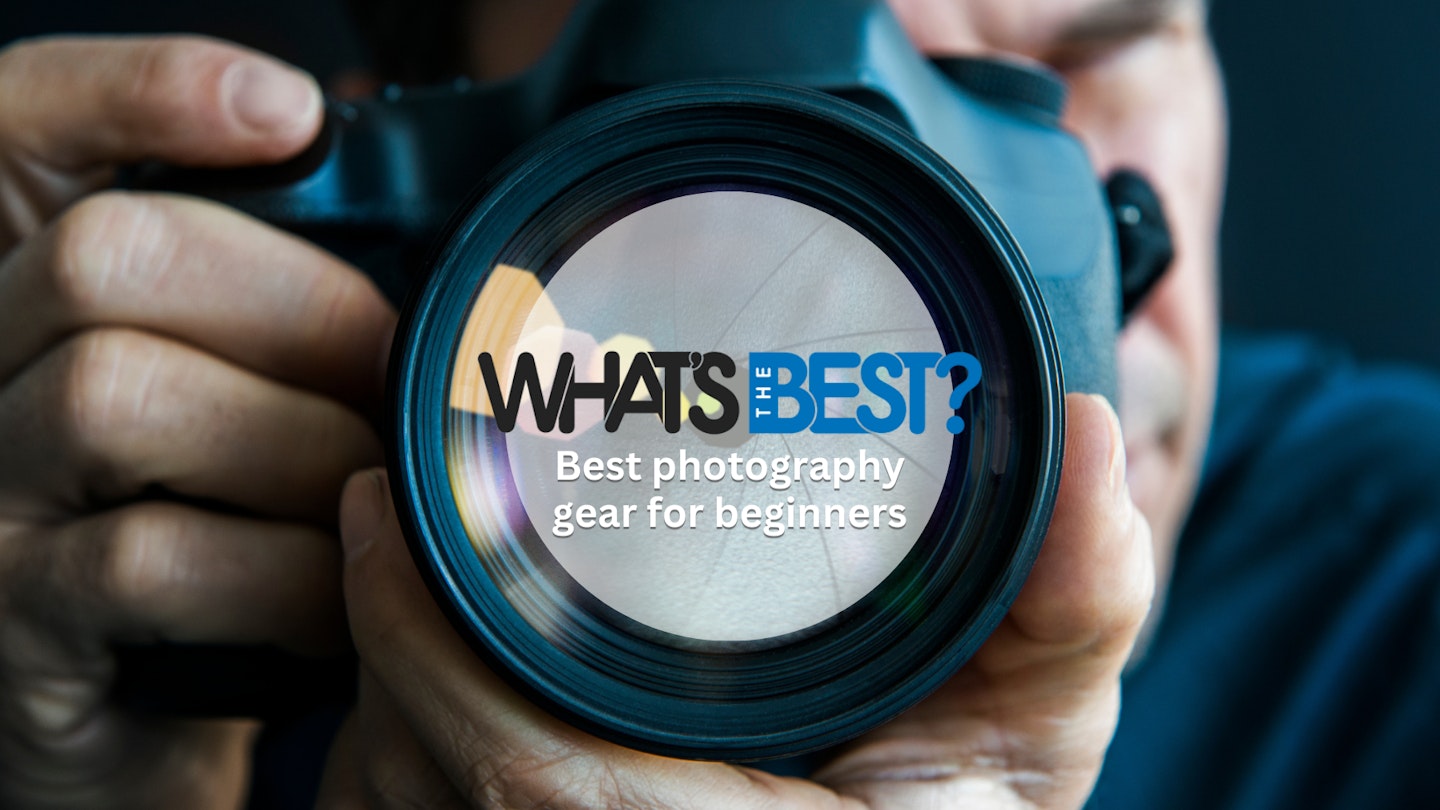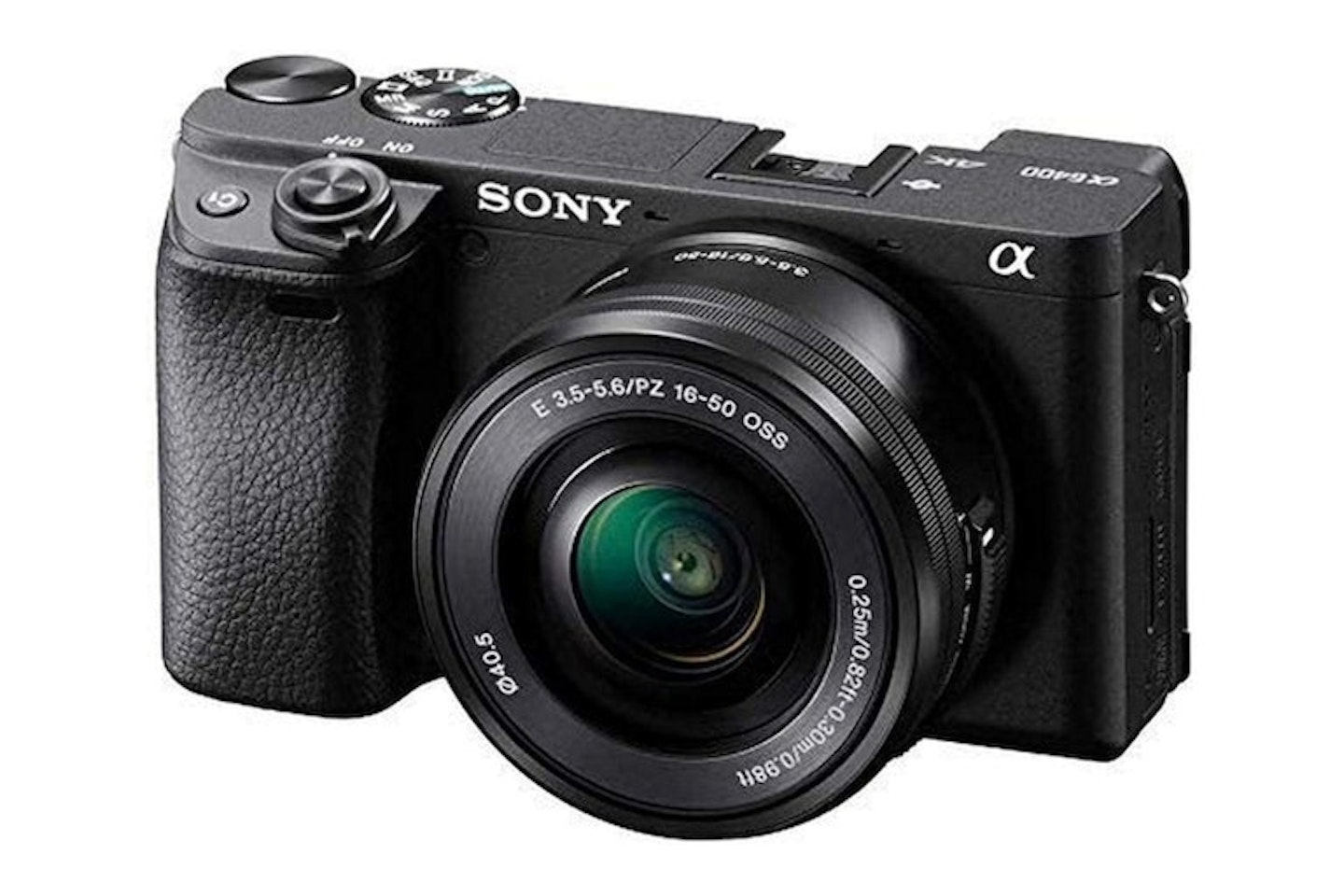If you’re just starting out with photography you’re bound to have had your eye on several highly impressive cameras (often at equally high prices), not to mention some of the best photography gear to go with them. But, you’ll also have noticed that the photography marketplace is crowded. With so many DLSR cameras, compact digital shooters, lenses, bags and more, how do you even get started and choose the right kit for your new hobby?
Thankfully that’s where our photography experts here at What’s The Best come in. Perhaps the first myth to bust is budget. Despite what many a seasoned snapper will have you believe, you really don’t need to spend thousands of pounds to get the best photography gear for a beginner’s needs. Even better, we’re not talking about particularly low-end camera options either. If you’ve had your sights on a digital camera like a Canon DSLR, a compact point-and-shoot or a hybrid camera that combines the best of both worlds, there’s something to suit you.
But, before you embark on your photographic journey, it’s worth taking some time to consider what kind of photography really floats your boat. Knowing what you want to shoot really helps you to make an informed decision before investing in your beginner’s best photography gear and the essential extras. There's a buyer's guide at the end of the article to help you narrow things down.
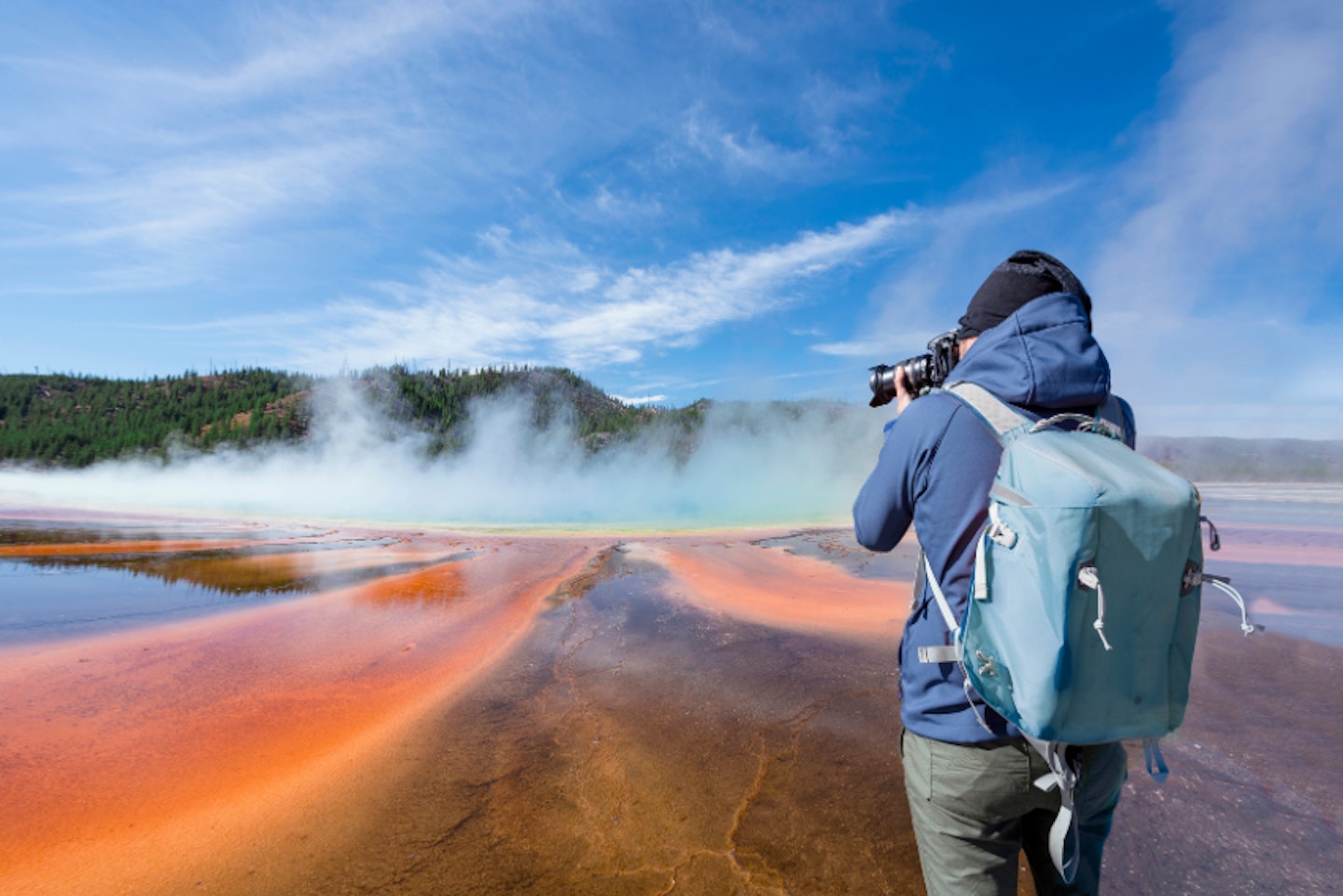
Best photography gear for beginners: What kit do you really need?
Now to the exciting bit - finding your new photography kit. While there are plenty of places that will try to convince you that you need three lenses, two tripods and more lens filters than you can fit into a photographer’s rucksack, we’re breaking this down into the true essentials.
Here’s a heads-up on what we’ll be looking at: Cameras, lenses, tripods, filters, bags, memory cards and lastly camera cleaning kits. By the end of this article, you’ll be all kitted out with the best photography gear that a beginner could need.
As we mentioned, there’s a lot of choice and variation when it comes to technology in this hobby. We’re making our recommendations here based on the average photographer’s needs. If you’re looking at specialisms like extreme macro or ultra-wide lenses then, again, just make sure that your choice of camera supports the lenses you want to use. Here are our top camera picks:
Best photography gear for beginners: Cameras
Best beginner's compact digital camera
Although instant cameras and compact cameras are ten-a-penny, decent compacts are actually highly capable pieces of kit. The best of them will give you software-based access to key settings like aperture and shutter speed but also have a slew of technical enhancements to make shooting faster and easier. They’re typically a great choice for the casual photographer who likes to keep things light, portable and flexible with reliable results.
Best beginner's compact digital camera
Panasonic's Lumix DMC-TZ100 is a particularly refined high-spec compact camera with lots of easily accessible manual settings. Sporting a Leica zoom lens, it has a 25-250mm, more than enough range to suit a host of subject matter, despite not being interchangeable. Resolution-wise, you have a 20.1MP 1" sensor, and 4K video; plus an amazing feature that lets you take a photo and choose your focus later.
Beginners will like the manual controls on the top. Much like a full-sized DSLR, you have quick access to various shooting modes via the top dial. The back includes a large touchscreen with manual shortcut buttons for preset functions. There's a handy focus-lock button too, for even more control over your image - indispensable when you don't have a lens with a manual focus ring.
Pros
- 20MP sensor and Leica lens make this a dream combination for beginners
- Compact and lightweight - take this anywhere, ideal for the casual photographer too
- 10fps burst shooting (5fps in AF mode) means you can capture the moment
Cons
- Touchscreen-based focusing isn't unusual on this class of camera, but some may not appreciate the lack of a focus ring
| Sensor | CMOS 1″ (13.2 x 8.8 mm) |
| Megapixels | 20MP |
| Lens | 25-250mm equivalent F2.8-5.9 Leica DC lens |
| Continuous shooting speed | 10fps burst shooting (5fps in AF mode) |
| Autofocus | Yes |
| Dimensions | 111 x 65 x 44 mm |
| Weight | 312g |
- Customer review: "If you are patient and play with the abundant settings of which there are many you will get stunning results. This is a camera for someone who is willing to learn about how a camera works, it’s all about aperture, shutter speed and ISO settings. The camera will help you but you still have to experiment with various settings until you get the perfect picture. Believe me, it’s worth it. The focus, in particular, is so good, it takes crystal clear photos."
Best beginner's hybrid / bridge camera
A hybrid camera (or bridge camera) is a broad term for a camera that combines some of the flexibility of a full DSLR (such as interchangeable lenses, and manual controls) with some of the automatic features of a digital point-and-shoot compact camera. It’s a great starting point for any new photographer who wants to learn more about key photography principles without getting out of their depth.
Best beginner's hybrid / bridge camera

Once again, Panasonic provide a solid beginner's camera here, with the Lumix DC-FZ82. It balances price and specification very well indeed. Best of all, it has the kind of manual controls you'd normally see on a more expensive DSLR.
It does, however, have a fixed non-interchangeable lens - but it is compatible with various lens converters that can be easily attached for a bit more flexibility. That said, the outrageously flexible 60x optical zoom lens gives you 20mm - 1200 mm at F2.8 - 5.9. The 18MP sensor is more than up to the task, and of course, you're getting the solid build and performance you'd expect from Panasonic. If you want to learn how to control exposure, depth of field, manual focusing and more - this is the entry-level camera for you.
Pros
- Great for manual control without too much complexity
- Ultra-wide 20-1200mm 60x zoom lens is practical for lots of styles of photography
- Powered optical image stabilisation means you can use this well while handheld
Cons
- The touchscreen is fixed, so if you like to be able to angle yours look elsewhere
| Sensor | 1/2.3" (~ 6.16 x 4.62 mm) CMOS sensor |
| Megapixels | 18.1MP |
| Lens | 60s optical zoom, 20mm - 1200 mm at F2.8 - 5.9 |
| Continuous shooting speed | 10fps |
| Autofocus | Fast AF |
| Dimensions | 130.2 x 94.3 x 119.2 mm |
| Weight | 616 g |
- Customer review: "Absolutely love this item. It has a lot of accessible features and filters, like the star setting, which gives a pretty twinkle to lights. And the artistic nightscape filter gives you up to 30 seconds of exposure time. It’s lightweight and comfortable. I’m still finding my way round the settings but, for me, this is a brilliant WiFi-enabled bridge camera."
Best beginner's DSLR camera
Most DSLR (Digital Single Lens Reflex) cameras are ASP-C - which means it’s a cropped sensor. Although this sounds like a disadvantage, it’s still the de-facto standard for many professionals when they’re not using expensive full-frame cameras. A full-frame camera is the closest to the old 35mm film cameras of old in terms of the size of the sensor and the image the lens can create. An ASP-C sensor is physically smaller, by about 1.5x, so your shots appear cropped compared to full-frame. Here’s our pick of a DSLR camera with a cropped sensor, the most common type on the market.
Best beginner's DSLR camera

Canon are our go-to favourite brand for cameras, especially for those new to the hobby. This EOS 2000D boasts a 24.1MP APS-C sensor, EF-S 18-55mm f/3.5-5.6 IS II lens and a 3-inch 920k-dot rear LCD screen. If you're the fast-shooting hands-off type, this has a brilliant 9-point phase detection autofocus system. Continuous shooting speed can reach a fairly limited 3fps continuous shooting speed, but the ISO range of 100-6400 will at least keep you shooting at respectable shutter speeds in low light.
As you’d expect, the Canon has an in-built flash, which keeps it in line with the rest of the competition and helps when shooting in low light, where an extra pop can be incredibly handy. It also captures Full HD 1080p video at 30fps. With so many features at your fingertips, it's no wonder this made the top spot on our lineup of the best Canon DSLR cameras.
Pros
- 24.1MP for stunning shot definition
- The guided menus are ideal for beginners
- Excellent choice of compatible lenses so you can experiment with even more lens choices as your skills grow
Cons
- Lacking a touchscreen, so you'll need to get used to using the camera controls (not necessarily a bad thing)
| Sensor | CMOS, APS-C sensor |
| Megapixels | 24.1MP |
| Lens | EF-S 18-55mm f/3.5-5.6 IS II |
| Continuous shooting speed | 3fps |
| Autofocus | 9 point autofocus |
| Dimensions | 101.3 x 129 x 77.6 mm |
| Weight | 475g |
- Customer review: "If you need a good video and photographic camera with a very big zoom and decent picture quality, this is the one. 4K video cameras with this power of magnification are expensive. Being able to set modes makes this ideal for quick. no fuss shooting for most conditions."
Best beginner's mirrorless camera
A mirrorless camera has a distinct advantage over a DSLR because, unlike the latter, there is no mirror to ‘reflex’ out of the way of the sensor between shots. And that can mean super-fast shutter speeds and burst modes. So, if you’re all about shooting in burst mode to get the shot, mirrorless is probably the way to go.
Our pick below is a micro four-thirds-based camera. Although you can buy mirrorless cameras with cropped and full-frame sensors, we think the most cost-effective and flexible choice here is micro four-thirds. The name comes from two things - the size of the sensor (which is smaller than ASP-C) and the universal lens mount system. That means you can buy a micro four-thirds lens from any mainstream brand and it should fit your camera body.
Best beginner's mirrorless camera
This is one of the latest mirrorless cameras from Sony. As a mirrorless camera, the Alpha 6400 is a smaller and more practical camera that's ideal for fast and responsive shooting. And that compact body has a maximum of 11fps continuous shooting too. The ISO range is also super-impressive at 100-32,000. The 24.2MP APS-C sensor is paired with real-time tracking and eye and animal AF - and that 425-point phase-detection AF system is stunning.
It also boasts some very respectable video specs, such as 4K video at 30fps, or 1080p Full HD at 120fps. You can shoot in V-Log, increasing the dynamic range and allowing for colour grading, as well as using an external mic jack for superior audio. It also features a front-facing flip-up touchscreen. However, if you are into video, this lacks built-in image stabilisation. All in all, though, it's an affordable mirrorless beginner's camera for those who are familiar with key photography concepts.
Pros
- Highly advanced autofocus means you can use this at your own speed and still get results
- Amazing resolution and detail from the 24MP sensor
- 180-degree tilting touchscreen - ideal for framing things up in tight spaces
Cons
- No built-in image stabilization - so you'll need a tripod or fast shutter speeds to overcome camera shake in certain conditions
| Sensor | APS-C Exmor CMOS |
| Megapixels | 24.2MP |
| Lens | 16-50mm Power Zoom Lens |
| Continuous shooting speed | 11fps |
| Autofocus | 425-point phase-detection AF |
| Dimensions | 120 x 67 x 60 mm |
| Weight | 403g |
- Customer review: "The photos are amazing. The autofocus is something else with its speed and general accuracy, and, has a host of modes to ensure pictures are in focus. If you can’t face the menus it takes excellent photos in Auto mode. But, if you take some time to get used to the menus and settings, the results just get better! Highly recommended."
Best photography gear for beginners: Best lenses
Depending on your choice of camera brand and model, your lenses will need to be compatible. One of the better lens standards for compatibility is micro four-thirds, as it’s a universal mount; but the sensor in a micro four-thirds is smaller and more cropped than a standard ASP-C. So, it may not be a good idea to choose a camera body based on the micro four-thirds lens standard alone. That said, Sony has a great range of micro four-thirds cameras and the lens system is universal. So, you should be able to mix and match your camera body with lenses from other manufacturers, like lenses by Panasonic and others.
Elsewhere though, not every lens will fit every camera, even within the same brand. Using Canon as a popular example, even its own DSLR lenses aren’t universal. For instance, its EF and EF-S lens ranges will fit onto a Canon crop sensor body, but the latter will only fit full-frame Canon cameras.
So, with that in mind, we’ve listed our best beginner’s lens picks here and chosen Canon products as a rough guide to lens types. The same benefits and principles apply to all lenses of these types, regardless of brand or which body they’re compatible with.
Best fixed (prime) lens
Best Canon fixed (prime) lens for beginners
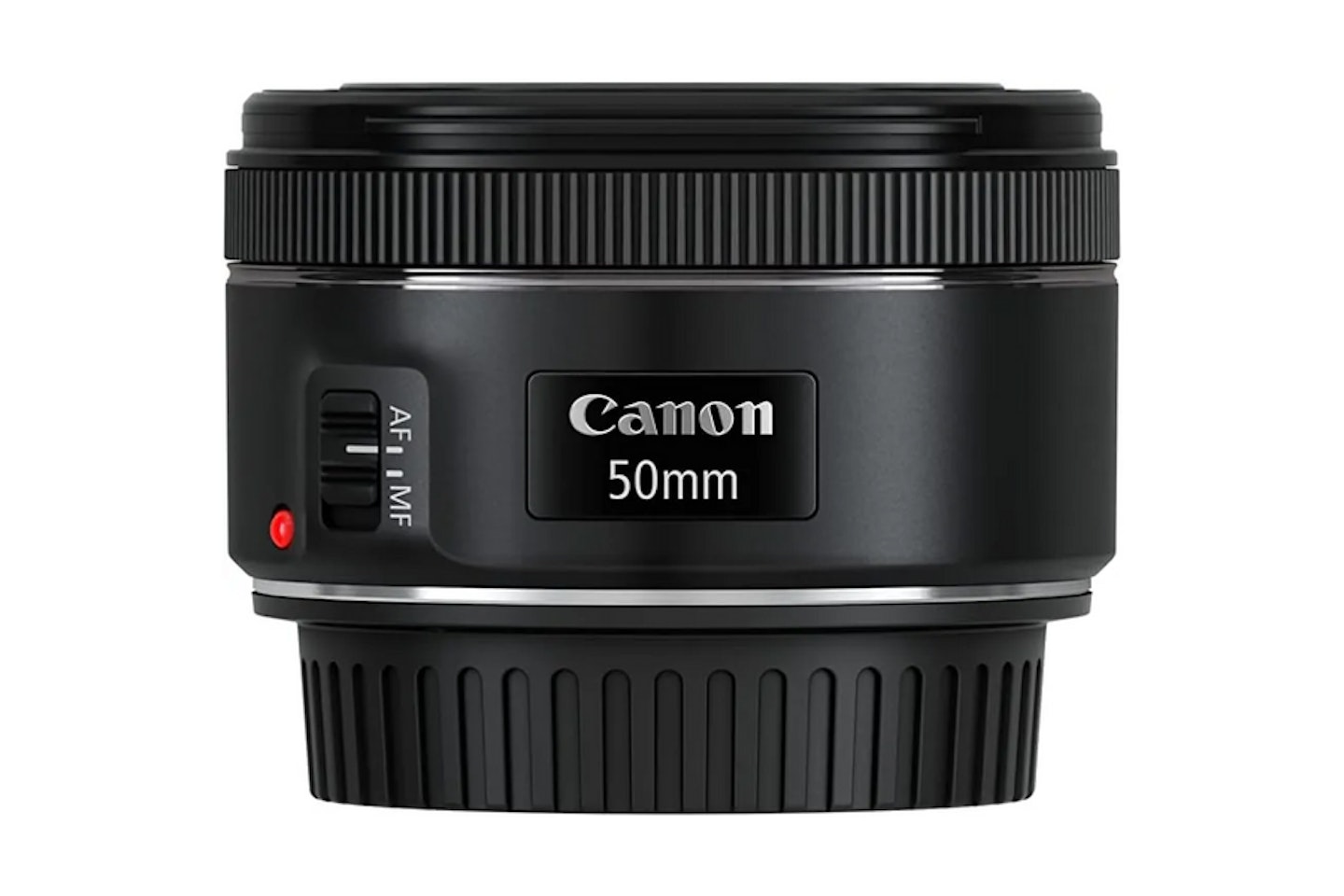
A prime or fixed lens is, simply, a non-zoomable lens. With a fixed focal length and a short body, these have a couple of advantages. This Canon version, for instance, is 50mm - that means it's a nice, reasonably wide multipurpose lens that won't sacrifice light -due to the fact it's not a longer zoom lens. That means more control over your image. A fixed lens can also have less distortion than other types.
Pros
- Canon build quality is solid and reliable
- The wide aperture can deliver f/1.8 for loads of light and exposure options
- STM is Canon's stepping motor technology for responsive autofocus
Cons
- If you want more flexibility you may end up owning more than one fixed lens
| Mount | Canon EF |
| Max focal length | 50 mm |
| Min focal length | 50 mm |
| Max. aperture | f/1.8 |
- Customer review: "The image quality is excellent, I've captured sharp, detailed photos with minimal distortion and beautiful background blur (bokeh) even in more challenging lighting conditions. This is possible due to the wide f/1.8 aperture which allows it for indoor and nighttime photography with minimal noise."
Best zoom lens
Best Canon zoom lens for beginners
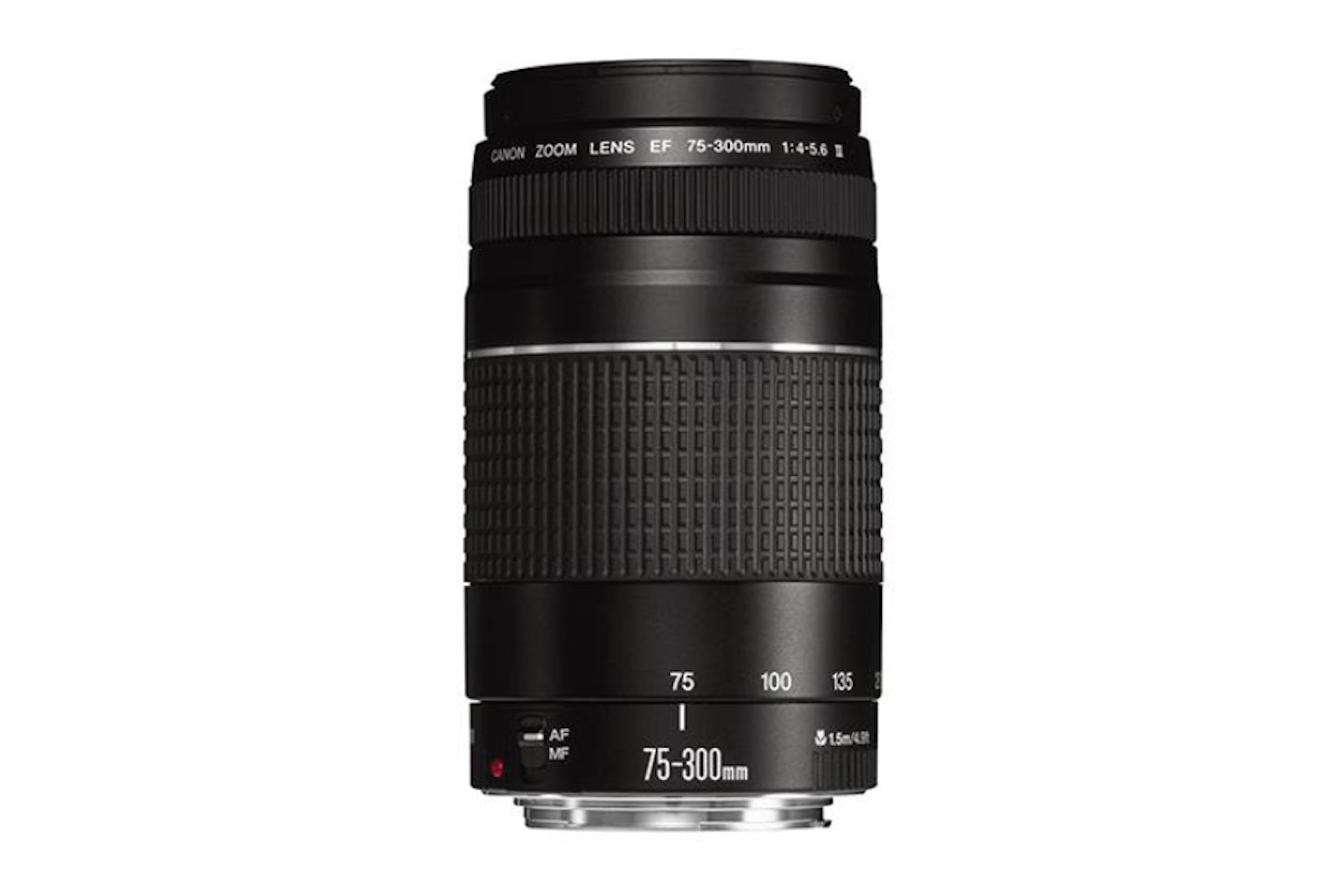
www.jessops.com
The benefits of a good zoom lens are readily apparent, but this Canon EF 75-300mm has a vast zoom range for the money. Although it won't give you an ultra-wide starting point, being able to zoom from 75 to 300mm means you'll have a ton of flexibility no matter where you are. If you're all about being able to get to the detail from afar, as well as reverting to a more standard lens configuration for scenery and cities, this is for you.
Pros
- Lots of shooting and framing options thanks to the huge focal range
- A sizeable and highly practical lens with easy controls
- EF mounting system is one of the more widely compatible lens formats in the Canon range, so if you upgrade your camera body you can keep and reuse your lens
Cons
- Quite a long lens - depending on your budget you may need to buy a new case or camera bag
| Mount | Canon EF |
| Max focal length | 300mm |
| Min focal length | 75mm |
| Max. aperture | f/4-5.6 |
- Customer review: "I love using my lens. It was the best Iv ever brought really. Recommended for beginners"
Best macro lens
Best Canon macro lens for beginners
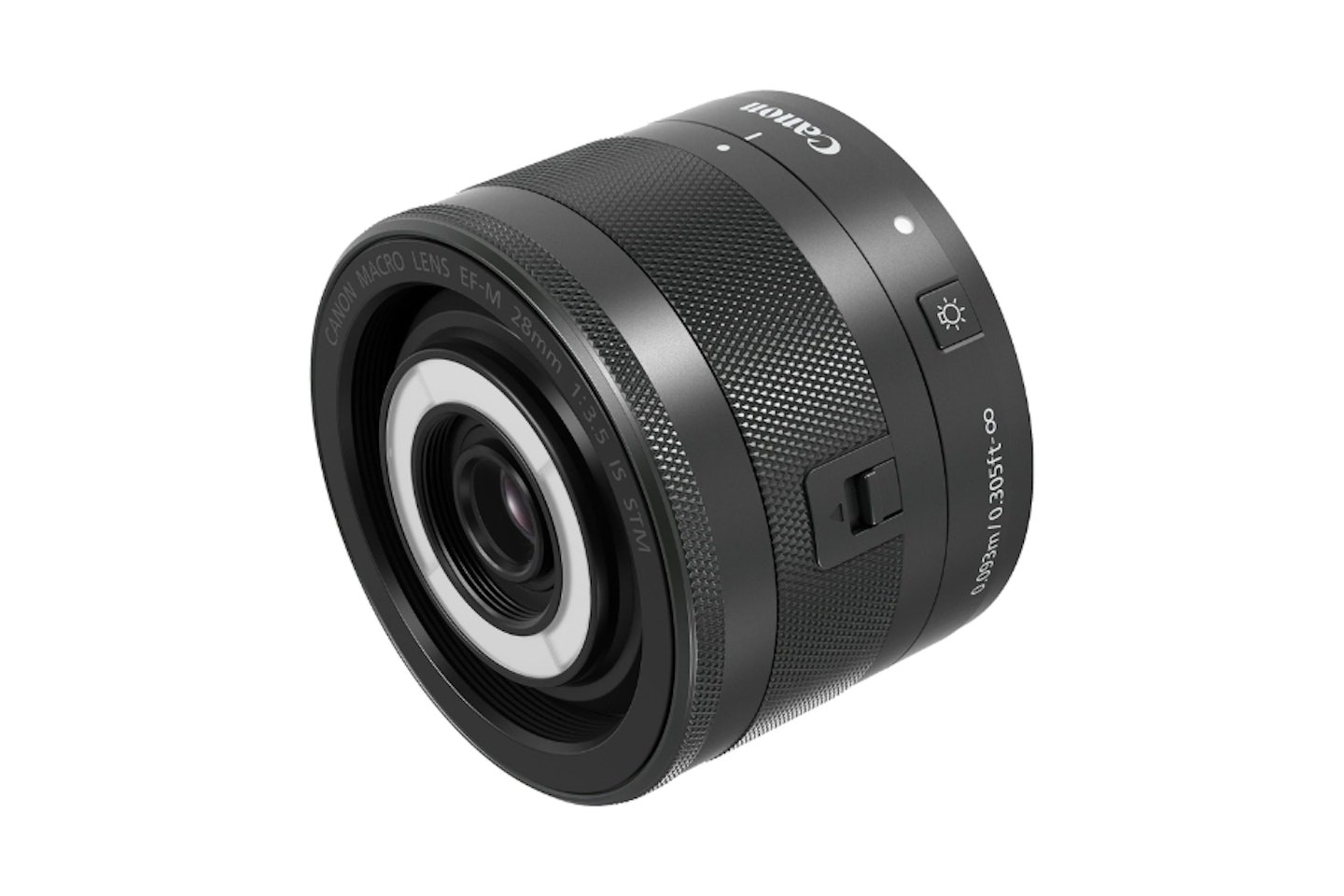
Fans of snapping bugs' faces or the stamens of flowers will love the amount of available light that a fixed macro lens, like this Canon EF-M, can provide. The addition of image stabilisation and an STM motor for fine autofocusing is invaluable when trying to frame up tiny objects too. The mount on this is, however, the EF-M standard - which only fits Canon mirrorless models. As a specialism, if you really are into macro photography, mirrorless is a great choice as the cameras themselves are often lighter and more compact - much easier to handle out in the wild for these kinds of shots.
Pros
- Excellent image stabilisation to help you get the shot
- The lens has a stepper motor for focussing - another thing to help you snap the right shot at the right moment
- A good maximum aperture allows for plenty of light and exposure and depth of field control
Cons
- This one is the EF-M mount for mirrorless - it can't be adapted for standard Canon DSLRs
| Mount | Canon EF-M |
| Max focal length | 28mm |
| Min focal length | 28mm |
| Max. aperture | f/3.5 |
- Customer review: "Crisp images sharp with over all contrast. Very good magnification and has the added bonus of built-in lighting to fill in shadow detail in close-ups. Also a good all-round lens for general photography."
The best tripod for beginners
Although shooting hand-held is well within most people’s grasp, we recommend that beginners attach their new camera to a sturdy and well-engineered tripod. Beyond being stable enough to keep your kit safe, it’ll free up your hands to use the camera and familiarise yourself with the controls and settings. This is especially true if you’re going for one of the larger DSLR cameras, as they can be quite bulky with an array of buttons on all sides. So, keeping things simple, here’s our pick of a tripod that’ll be a reliable second pair of hands as well as an essential addition for anyone who needs to avoid camera shakes during shoots with long exposure times.
Good tripods don't have to come with a sky-high price tag. This one from Victiv isn't the lightest, but it is highly practical and steady. Not only will this take weight up to a staggering 12lb, but it'll convert into a monopod if you want to shoot with a little more handheld involvement. It comes with two quick-release camera plates for easy mounting and demounting for your kit. Extend those legs and you'll have a huge 21.6''-72'' height range to choose from.
Pros
- Very sturdy - this will definitely hold your camera securely
- Huge extendable leg range - lets you get all manner of shots without the hassle of going handheld
- Converts into a monopod if you need a hybrid between handheld control and locked-off stability
Cons
- A little heavier than more expensive options
| Min. height | 21.6 inches |
| Max. height | 72 inches |
| Weight | 1.6 kg |
- Customer review: "This seems to be a thoughtfully designed strong sturdy item. It isn't very light of course, but then it wouldn't be as sturdy or stable if it was. The tilt/rotate controls are really smooth and adjustable. I also appreciated the second quick-release shoe included and the fact that the central post can be used as a monopod. The included instructions are good and clear."
The best lens filters for beginners
The term ‘lens filter’ can strike fear into a novice photographer, bringing to mind some physics lessons about light frequencies and cheesy starburst effects. But here, with the beginner in mind, these recommendations are all about protecting your lens as well as some fringe benefits to your shots. Keep in mind that you’ll need to find the right size and fit for your chosen lens, though - or a lens adapter ring.
UV filters
These, like most filters, screw onto the front of your compatible lens. The best ultraviolet Lens Filters for Canon cameras work like this, and they will protect your precious lens and lock UV light - it'll hardly affect your shot while preventing that blue cast you can get with photos taken on bright sunny days. The primary function, we think, is to protect the lens. Buy one, you'll thank us later.
Polarising filter
A polarising filter will, of course, protect the lens behind it. But the reason we've listed one here is because budding landscape photographers will quickly realise they want to darken skies, and negate pesky reflections and glare too. A polariser lens filter is easy to use with just a twist and it'll transform all manner of shots.
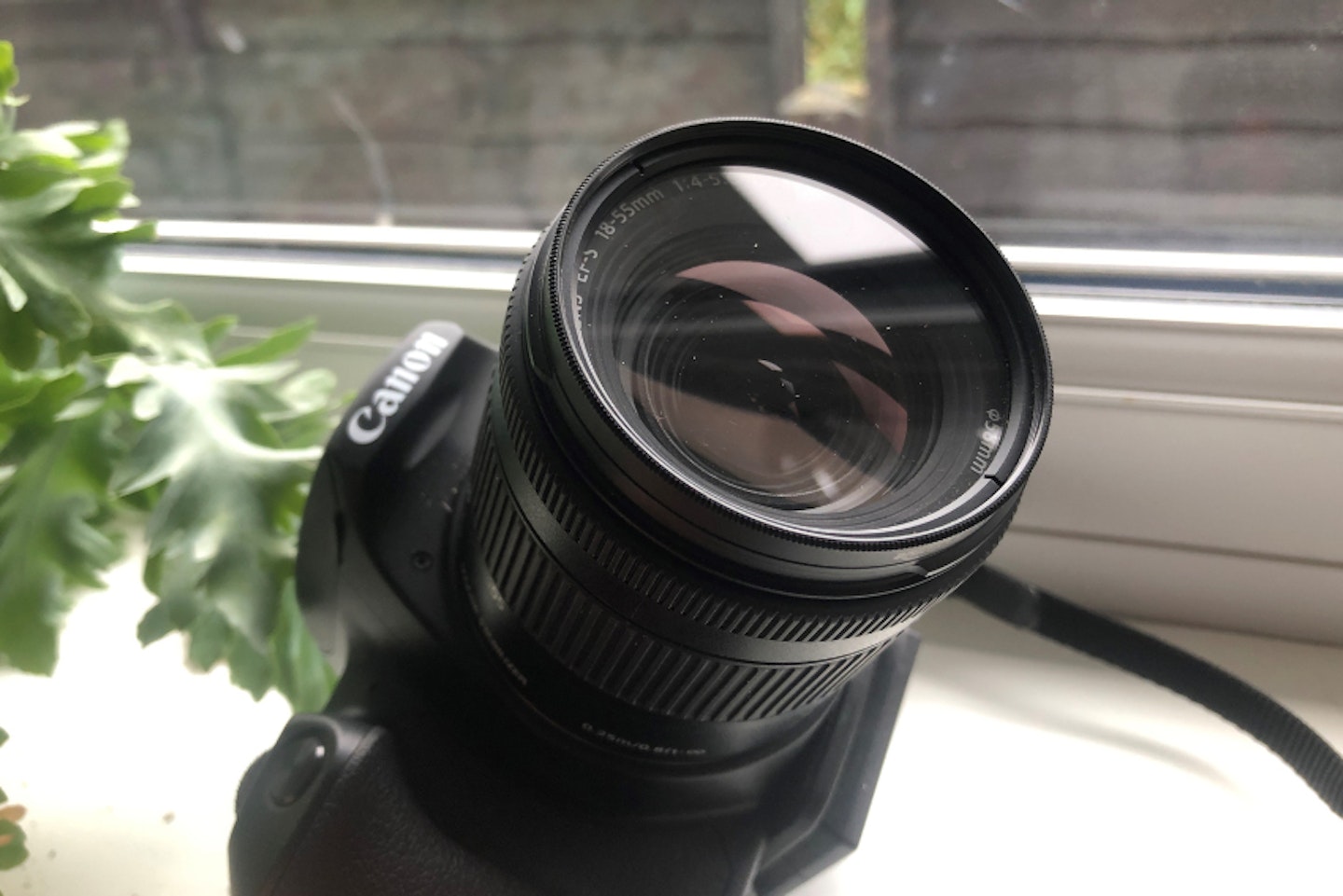
The best camera bags for beginners
Anyone and everyone should put one of these right at the top of their shopping list the moment they purchase their camera and lenses. There are plenty of protective options to choose from, although you can find compact versions and larger more rugged backpacks too of course. Check out our guide to the best camera bags to find yours.
Essential photography accessories for beginners
You won’t get too far in your new hobby without these two essential accessories - memory cards and a camera cleaning kit. We’re looking at SD cards here, as they’re the most common format in use, but some cameras have alternative memory card types and extra slots too. We recommend the affordable SanDisk 128GB Extreme PRO SDXC memory card - it's a Class 10 card, which means fast data transfer speeds, and it won't break the bank.
And don’t forget about keeping things clean. Even your trusty UV filter and camera body are going to need a quick dust and clean from time to time - and don’t be tempted to use your sleeve or t-shirt. We’ve chosen a well-rated kit that won’t damage your precious kit. We like this very comprehensive and affordable Professional Professional camera cleaning kit.
Best photography gear: Buyer's guide
What kind of photographer do you want to be?
Each camera and lens has its own specific strengths, so your choice here will have a direct impact on the shots you’ll be taking with them. Here are some of the more typical styles of photography to get you thinking.
Landscape and wildlife photography
Any photographer who’s looking to capture those grand sweeping landscapes will need two things: a wide-angle lens (or a powerful zoom if you're trying to capture wildlife from a distance) and a camera with a sensor and resolution to do the shot justice. Quite often, landscape photographers will have their favourite shots printed at larger scales to really bring the shot to life. So, it’s important to be able to capture the scene using the best lens and camera body combination for either distant cityscapes or the great outdoors. The best travel camera is the one you have with you - so choose wisely and it won’t let you down.

Portrait photography
If you’re all about capturing people in a more controlled studio setting, your lens choice will be well catered for by the majority of standard zoom lenses on the market, such as any lens that goes up to and beyond 55mm. This means that you can comfortably frame your subject without introducing undue lens distortion (or a fisheye effect) the closer you get to their face. The camera body will ideally have fully manual settings that allow you to change the aperture and ISO settings to tightly control the depth of field for those more evocative portraiture shots.
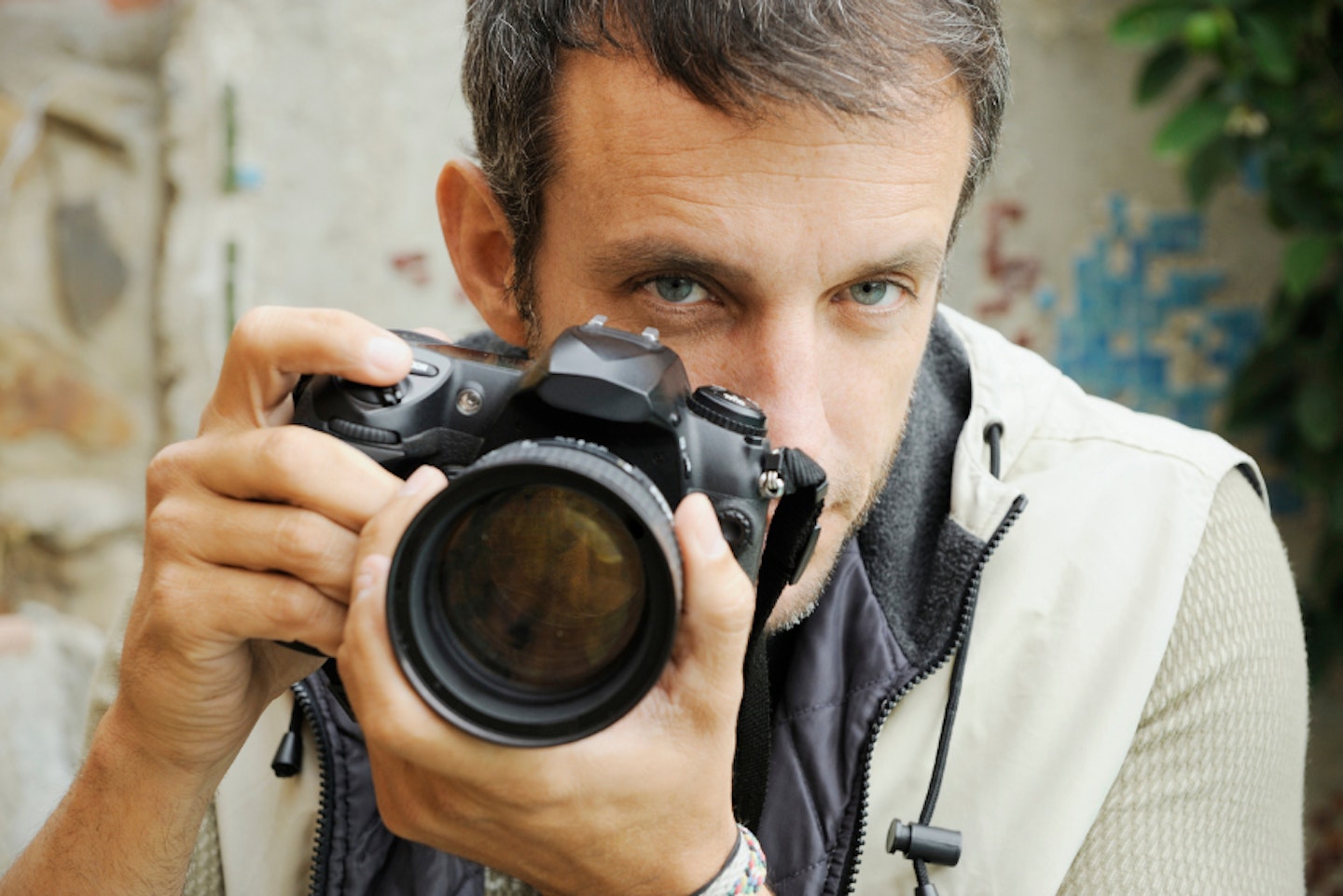
Documentary photography
If you’re a budding news photographer who likes to have the speed and flexibility to opportunistically capture the moment, you’ll need a camera body that’s capable of fast shutter speeds and burst shooting modes (firing off a continuous series of shots while the shutter release is held down). Some of the best budget cameras for action shots are very capable here. Combined with a practical but long zoom lens (plus, preferably, solid automatic shooting settings and fast autofocus) you’ll be ready for anything.
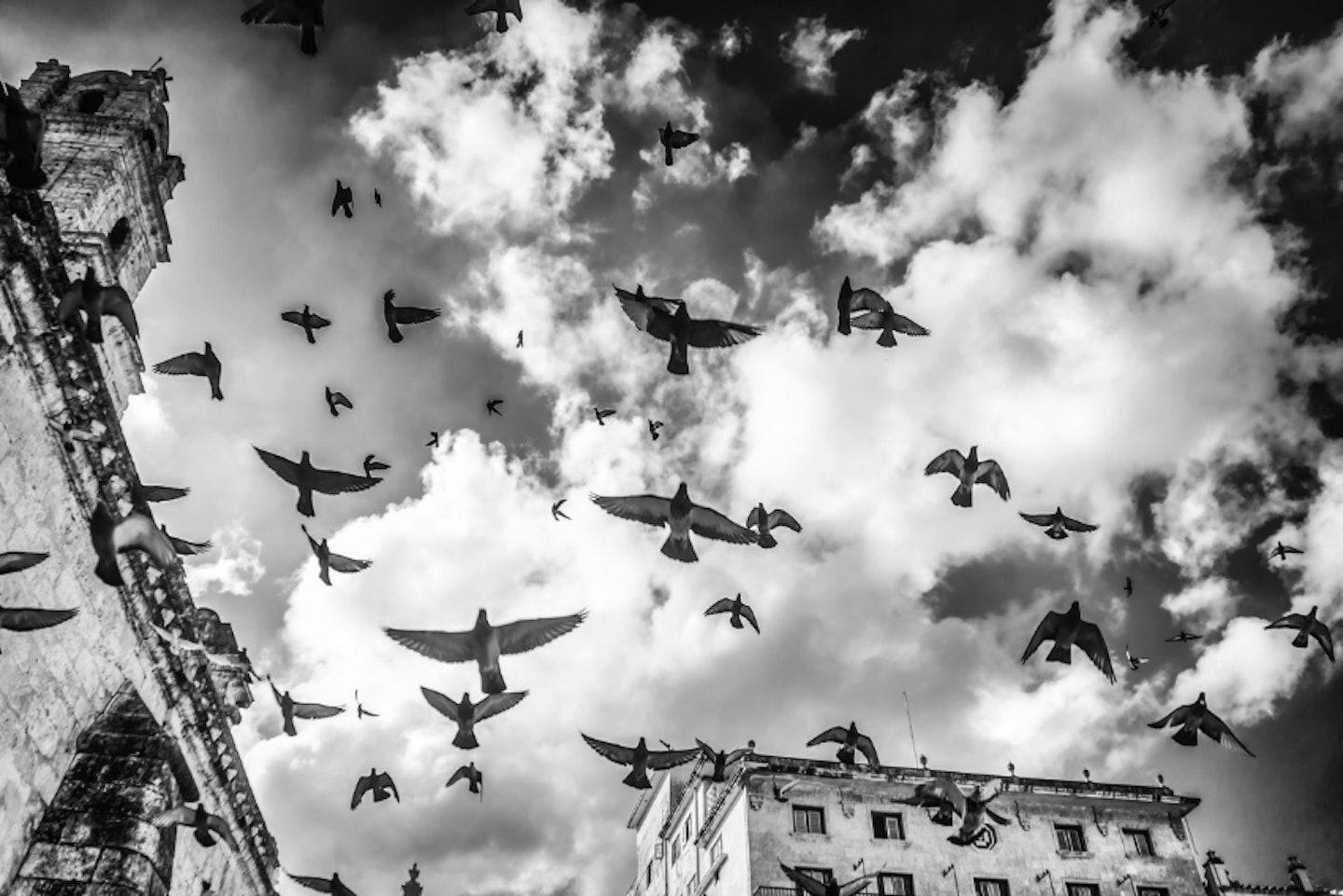
Macro photography
If you’re fascinated by those beautifully detailed super-close-up shots of insects, flowers, machine parts and more, you’ll need to prioritise your choice based on lens alone. Although many zoom lenses and compact cameras have a macro mode, for the best results you’ll need a macro lens. Having a dedicated lens like this does two things: Firstly, the available light will be better, as (not being a zoom lens) you’ll lose less light once it passes through the glass and travels down the lens body to the sensor. More light equals more choice when it comes to exposure, shutter speed and depth of field. Body-wise, any camera that has good low-light sensitivity (usually a cropped or full-frame sensor) with a high megapixel count will do the job, as long as the camera allows for full manual control over shutter speed, aperture and more.
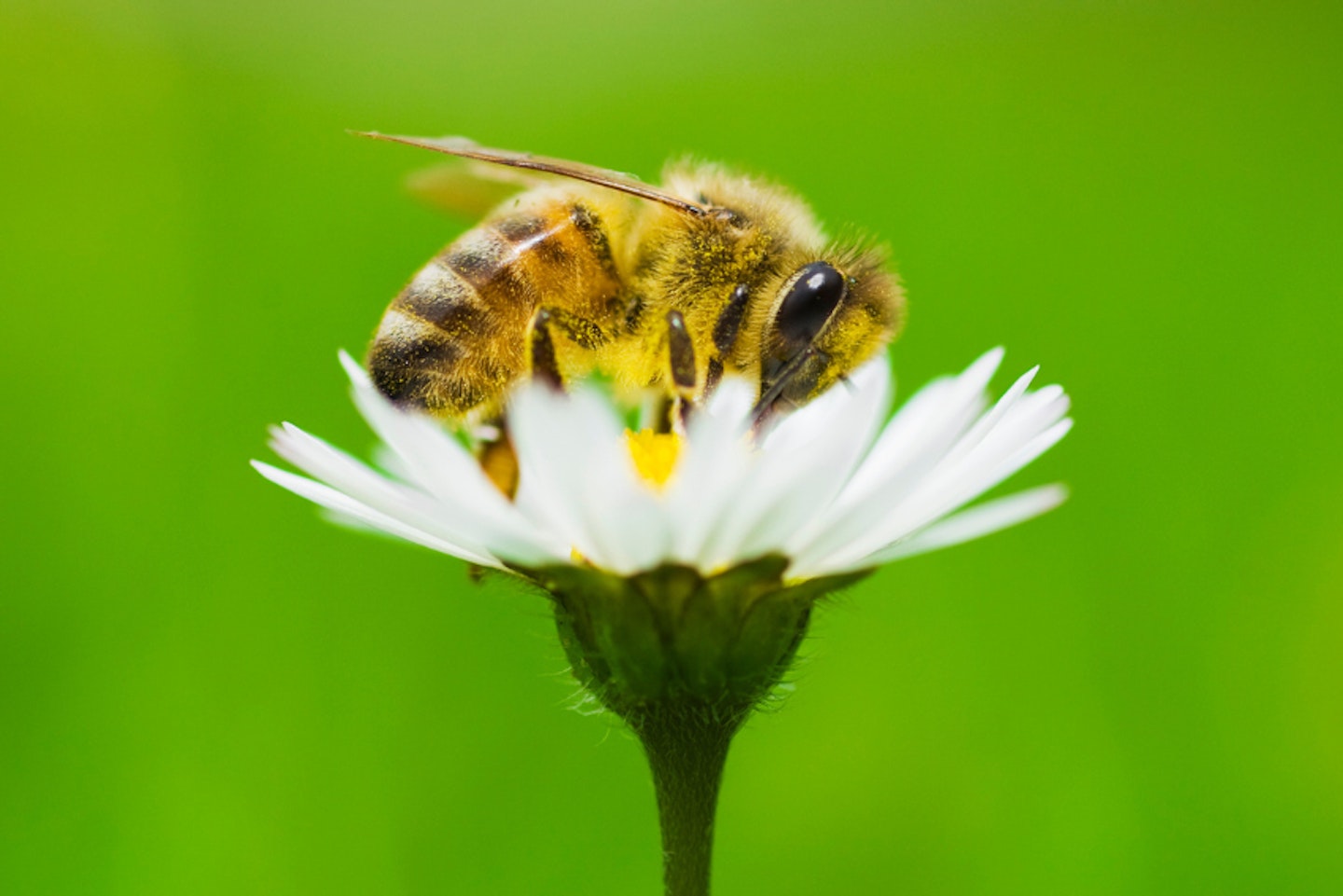
Get out there and start shooting
Whatever you choose, we’ve no doubt you’ll have the best photography gear for any beginner as you begin your new adventure. Our only remaining tips, other than enjoying your new hobby, are:
• Always take a spare battery - or two (if you can afford it)
• Stock up on memory cards - the larger the capacity the better
• Buy a waterproof cover (if your bag doesn’t have one)
• Last (but absolutely not least), take your time to learn. Discover the relationship between shutter speed, ISO (film speed) and aperture. Experiment with how they affect each other and you’ll be controlling your depth of field, exposure and much more in no time.
Chris Duffill is a Tech Product Writer for What's The Best and Yours. His background includes writing, editorial, marketing, design, video production and photography.
He specialises in home entertainment and audiovisual tech, including speakers, amplifiers, turntables, streaming media players, and TVs. He is also one of our resident experts in computing (PCs, tablets, smartphones, smartwatches), DSLR photography and all kinds of digital cameras. He also writes about retro gaming, game consoles and various electronic gadgets. If it plugs in, lights up or makes a noise, he’ll write about it.
Subscribe to the What’s The Best Newsletter to keep up to date with more of the latest reviews and recommendations from the rest of the What’s The Best team.
